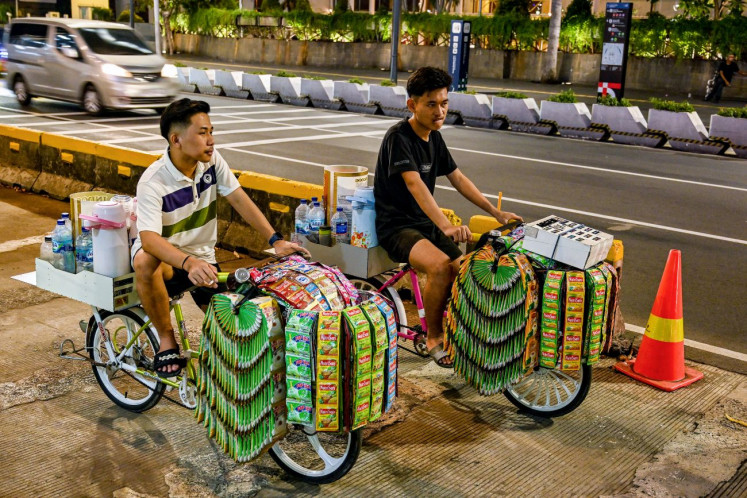Popular Reads
Top Results
Can't find what you're looking for?
View all search resultsPopular Reads
Top Results
Can't find what you're looking for?
View all search resultsSago: An underutilized local resource
Indonesia is rich is natural resources and needs to develop a food policy toward greater diversification, not only to be less dependent on rice, but — more importantly — to improve nutrition.
Change text size
Gift Premium Articles
to Anyone
T
he world’s population now stands at 7.6 billion people and is expected to reach 9 billion by 2050. The challenge is clear. The world needs to increase food production. To meet projected demand, cereal production will have to increase by nearly 50 percent and meat production by 85 percent.
The Global Nutrition Report 2017 indicated that, despite a decade of progress, the number of people going hungry has increased to 815 million people from 777 million in 2015.
That number is moving in the wrong direction and raises questions about the global commitment of countries to end malnutrition by 2030 in line with the Sustainable Development Goals (SDGs).
Being the fourth-most populous country (with 261 million people), Indonesia faces the same challenge. Indonesia is rich is natural resources and needs to develop a food policy toward greater diversification, not only to be less dependent on rice, but — more importantly — to improve nutrition. Indonesia has many options as alternatives for rice.
One of them is sago — a starchy food produced from the sago palm — which is currently underutilized. Not only can the sago palm be used as an invaluable source of starch, it can also be used as a raw material of innumerable products of significant commercial value.
Starchy foods are generally staple foods and are consumed worldwide as sources of energy. Furthermore, the starch may be extracted to be used as an ingredient that plays a critical and unique role in the food industry and other industries.
For the food industry, starches are used not only as a core ingredient, but also as a valuable ingredient or additive to enable shelf-stable foods to maintain the proper textural characteristics during processing (freezing, thawing, cooling, heating, etc.) and storage. Outside the food industry, natural (native), modified starches and/or starch derivatives can be found in products and processes in the consumer product, pharmaceutical, energy, industrial and chemical sectors.


















